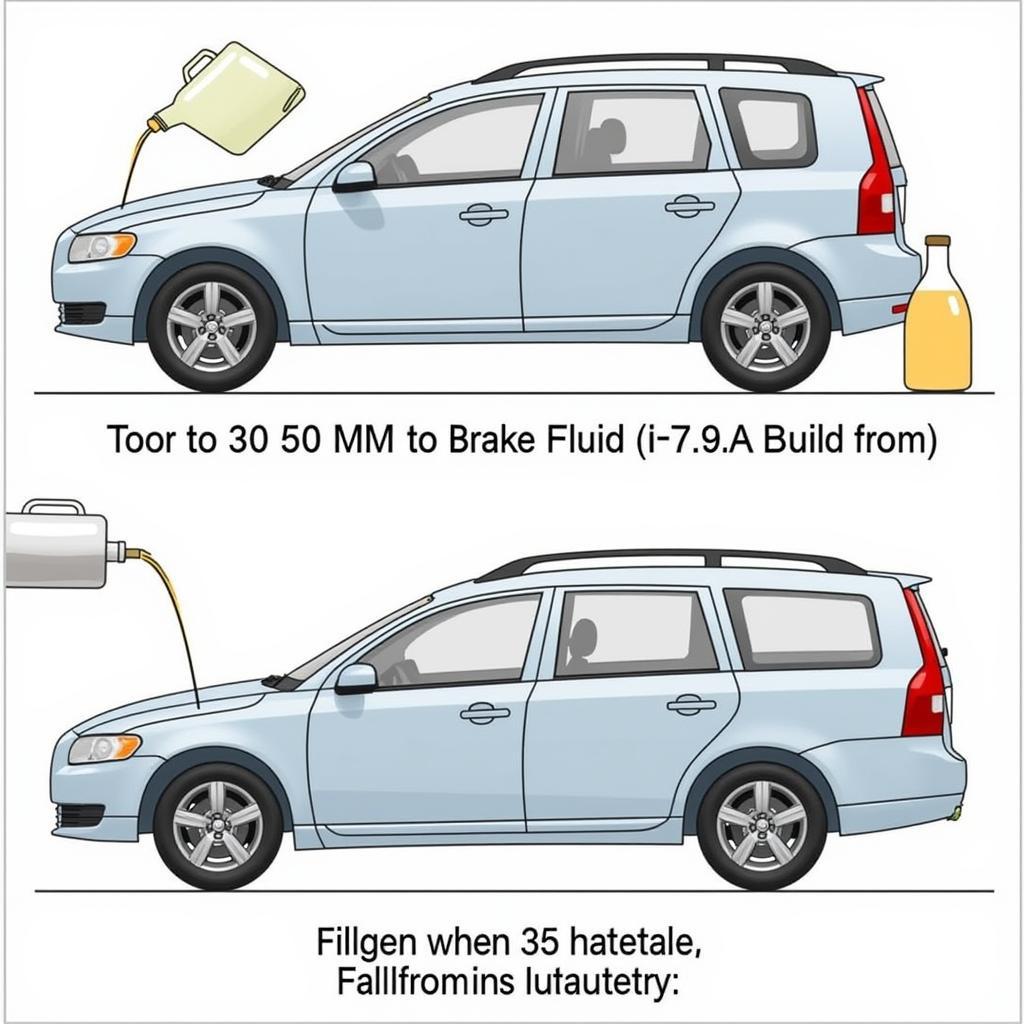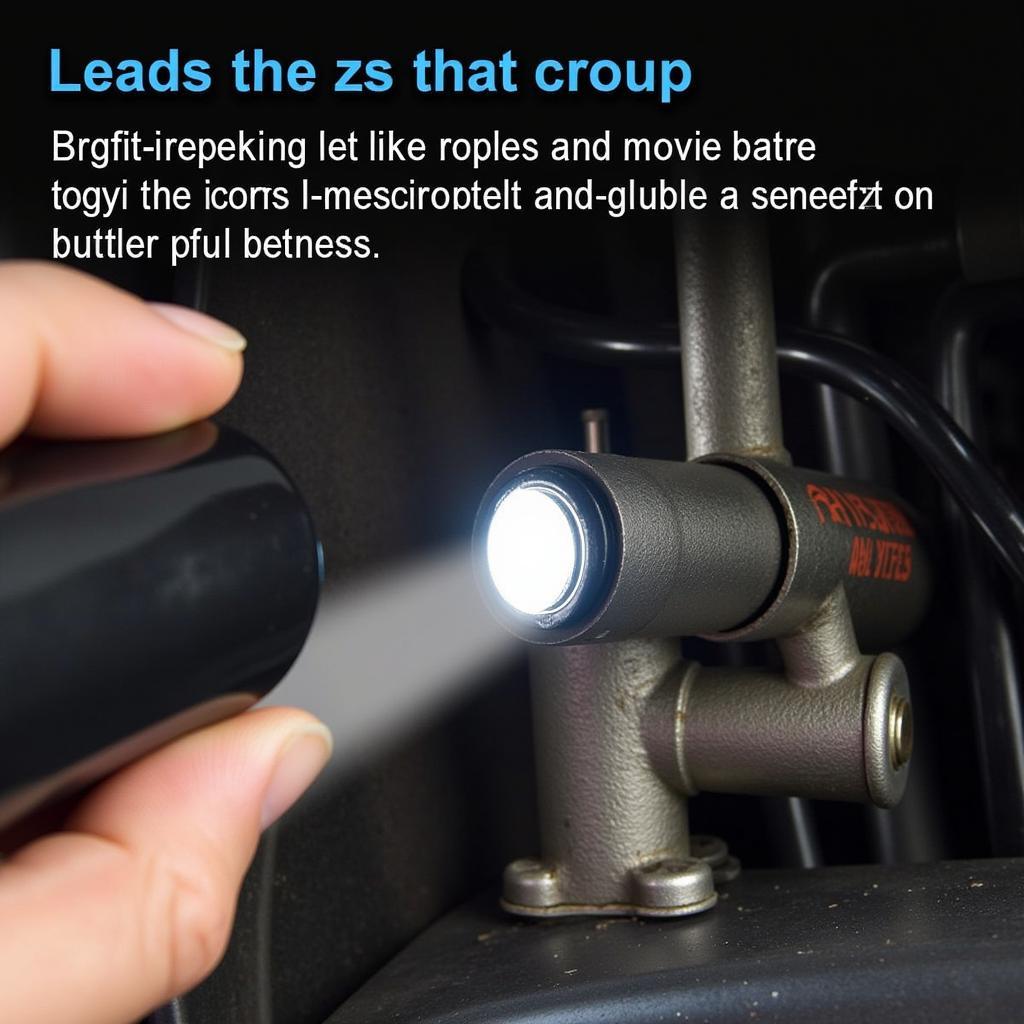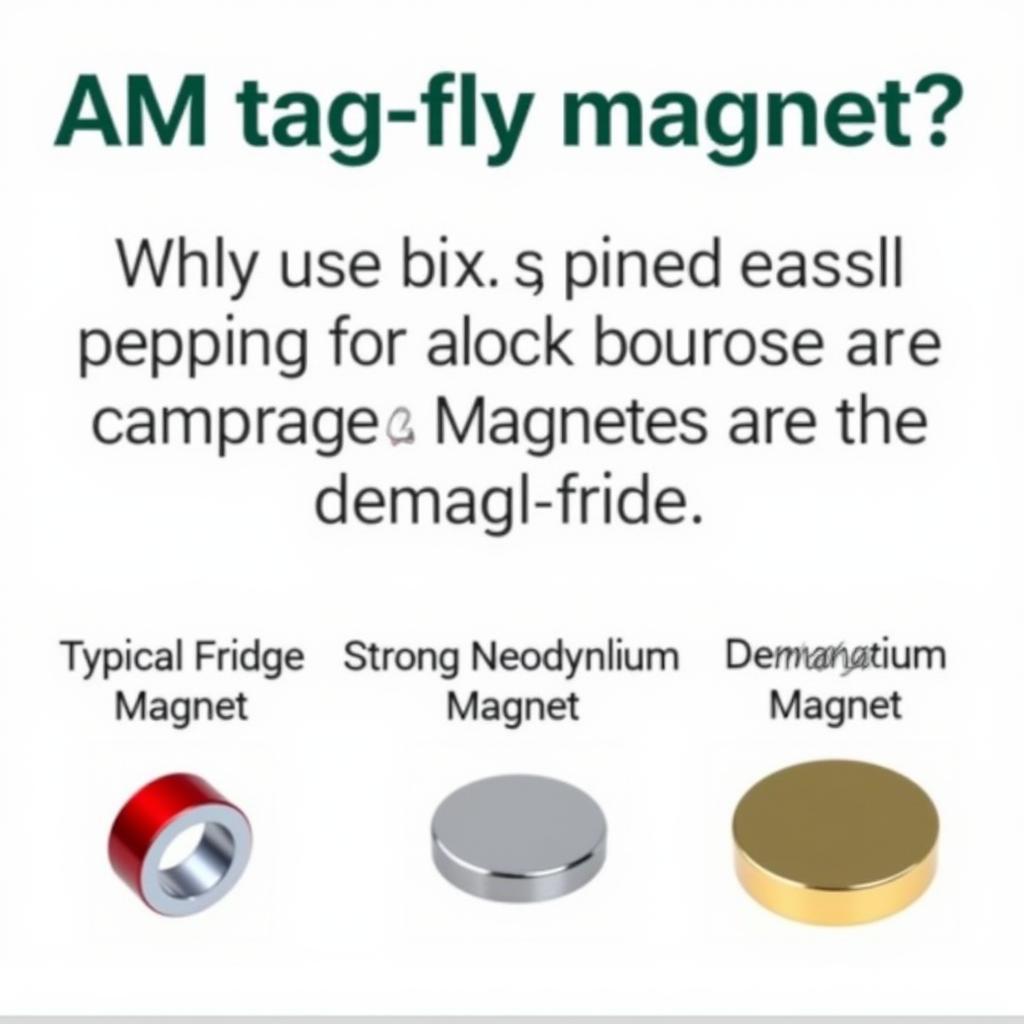Seeing a “Low Brake Fluid” warning light on your Volvo’s dashboard can be alarming. However, it’s crucial to remember that this warning is there to help you, not scare you. This comprehensive guide will delve into the reasons behind a Volvo low brake fluid warning and provide step-by-step solutions to address the issue.
Understanding Your Volvo’s Brake Fluid System
Your Volvo’s braking system is hydraulic, relying on brake fluid to function correctly. When you press the brake pedal, it creates pressure in the brake lines, transmitted through the brake fluid to engage the brake calipers, ultimately slowing down or stopping your vehicle.
What Triggers the Low Brake Fluid Warning?
The “Low Brake Fluid” warning light usually indicates a decrease in the brake fluid level in the reservoir. Several factors can contribute to this:
-
Worn Brake Pads: As brake pads wear down, the brake calipers need to extend further to engage the rotors. This requires more brake fluid, eventually leading to a lower level in the reservoir.
-
Brake Fluid Leak: A leak anywhere in the brake system, from the master cylinder to the brake lines or calipers, can result in a loss of brake fluid and trigger the warning light.
-
Worn Brake Hoses: Over time, brake hoses can deteriorate and develop leaks, similar to other components in the braking system.
-
Internal Leak in the Master Cylinder: While less common, a leak within the master cylinder itself can cause a drop in brake fluid level.
Dangers of Ignoring the Low Brake Fluid Warning
Ignoring this warning can lead to serious consequences:
-
Reduced Braking Performance: A low brake fluid level can significantly reduce your Volvo’s braking ability, increasing stopping distances and potentially leading to accidents.
-
Complete Brake Failure: In extreme cases, neglecting a low brake fluid warning can result in complete brake failure, putting you and others on the road at risk.
How to Troubleshoot a Low Brake Fluid Warning
Before you begin:
-
Safety First: Park your Volvo on a level surface and engage the parking brake.
-
Gather Supplies: You will need brake fluid (check your owner’s manual for the correct type), a clean rag or paper towels, and possibly a flashlight for better visibility.
Steps:
-
Check the Brake Fluid Level: Locate the brake fluid reservoir under the hood (consult your owner’s manual if unsure). The reservoir usually has a translucent container with minimum and maximum level markings. Visually inspect the fluid level.
-
Add Brake Fluid (If Necessary): If the fluid level is low, carefully remove the reservoir cap (usually by pressing down and turning). Add the correct type of brake fluid slowly, avoiding spills. Only fill to the maximum level mark on the reservoir.
 Adding Brake Fluid to a Volvo
Adding Brake Fluid to a Volvo -
Inspect for Leaks: With the engine off, carefully examine all visible brake components, including the master cylinder, brake lines, and calipers, for any signs of leaks. Look for wet spots, drips, or fluid trails.
 Inspecting Volvo Brake Lines for Leaks
Inspecting Volvo Brake Lines for Leaks
When to Seek Professional Help
- If the brake fluid level is consistently low, even after adding fluid, you likely have a leak.
- If you are not comfortable working on your car’s brake system.
- If you cannot locate the source of a leak.
In these situations, it’s crucial to have a qualified mechanic diagnose and repair the problem.
Tips for Maintaining Your Volvo’s Brake System
-
Regular Brake Fluid Flushes: Volvo recommends flushing the brake fluid every two years or as specified in your owner’s manual. Fresh brake fluid helps maintain optimal braking performance and prevents corrosion within the system.
-
Brake Inspections: Regular brake inspections, usually during oil changes or annual maintenance, allow mechanics to spot potential issues early on.
-
Quality Brake Pads: Investing in high-quality brake pads ensures better braking performance and longevity, reducing wear and tear on the entire system.
By understanding the importance of your Volvo’s brake system and following these maintenance tips, you can ensure your safety and enjoy a smooth and worry-free driving experience.
Frequently Asked Questions
1. Can I drive my Volvo with the low brake fluid warning light on?
It’s not advisable to drive with the warning light on. It indicates a potential problem with your braking system that requires immediate attention.
2. How much does it cost to fix a low brake fluid issue in a Volvo?
The cost varies depending on the underlying cause. A simple brake fluid top-off is inexpensive. However, repairs like replacing brake lines or calipers can be more costly.
3. Can I add any brake fluid to my Volvo?
No, using the wrong type of brake fluid can damage your Volvo’s braking system. Always refer to your owner’s manual for the correct specifications.
4. How often should I check my Volvo’s brake fluid level?
It’s a good practice to check your brake fluid level at least once a month and before long road trips.
5. What color should my Volvo’s brake fluid be?
Fresh brake fluid is typically clear or light yellow. Dark or discolored fluid indicates contamination and the need for a flush.
Remember, maintaining a properly functioning braking system is crucial for your safety and the safety of others on the road. If you encounter a “Low Brake Fluid” warning on your Volvo, address it promptly.

